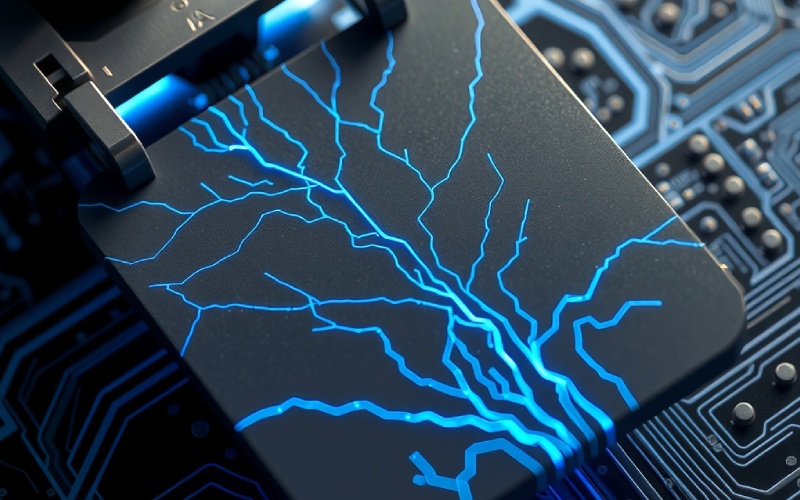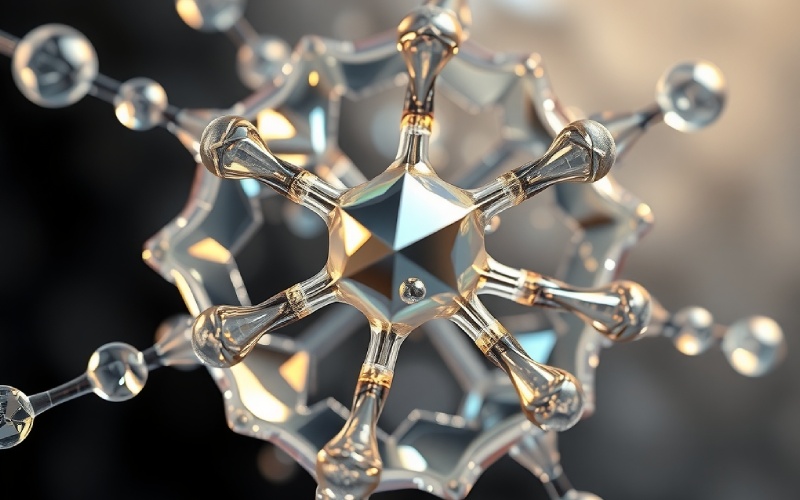Let Istar help you get started on your project with our experience and know-how!
Upload your design files and production requirements and we will get back to you within 30 minutes!

I remember looking at the periodic table in school. It felt like a large graph of complicated boxes. On one side were the steels, and on the other were the nonmetals. However, right between, there was an amusing staircase of aspects. These were the metalloids. They did not fairly fit in either group. For a long time, I just considered them as the “in-between” aspects. But as I have actually learned more, I have actually realized these metalloids are several of the most crucial components for our modern world. They have special properties that make them best for things like computers and solar cells. In this post, I want to share with you what I’ve discovered about the outstanding properties of metalloids. We will discover what makes them unique and why they are so useful.
There are six primary elements that are called metalloids. These are boron , silicon , germanium , arsenic , antimony , and tellurium . Sometimes, other components are additionally called metalloids, but these 6 are the most typical. The buildings of metalloids are intermediate between metals and nonmetals. This indicates they are not as proficient at carrying out electrical power as a metal, but they are better than a non-metal. This special ability is what makes them so important in electronics. The fact that they drop in between metals and nonmetals makes them an extremely unique team of components on the periodic table.

If you consider a periodic table, you will see a zigzag line that resembles a staircase. This line separates the metals from the nonmetals. You can locate the metalloid aspects right along this line. The metals get on the left side of the line, and the nonmetals get on the right side. This unique position on the periodic table is a huge idea about their homes. It informs us that they share attributes with both groups.
Having components categorized as metalloids assists us in understanding the fads on the periodic table. As you relocate from left to right, the elements come to be much less like a metal and more like a nonmetal. The metalloids are an excellent example of this adjustment. As an example, their ionization energy and electronegativity values remain between those of metals and nonmetals. Ionization energy is the energy it takes to remove an electron from an atom. Electronegativity is how well an atom can draw in an electron. These intermediate worths are key to their one-of-a-kind chemical habits.
One of the first things you could notice about a metalloid is its appearance. A lot of metalloids have a metallic luster. This indicates they are glossy, just like steel. If you saw a piece of pure silicon or antimony, you might believe it was a metal. But if you attempted to bend it, you would be in for a shock. Unlike steels, which are generally solid and can be formed, metalloids are brittle.
This indicates that metalloids are brittle and will certainly break or fall apart if you hit them or try to flex them. This is just one of the crucial physical properties of metalloids. All metalloids are solid at room temperature. This resembles a lot of metals. So, in their physical appearance, they appear like metal, but in their mechanical properties, they act much more like non-metals. This combination of a metallic appearance and being brittle is among the primary differentiating residential or commercial properties of a metalloid.
The chemical habits of metalloids are where things get actually interesting. They can imitate a metal in some scenarios and like a nonmetal in others. For example, metalloids can develop alloys with steels. An alloy is a combination of a metal with one or more components. Making an alloy is a process of metals. This allows us to create materials with special residential properties. For instance, including antimony in lead makes it tougher and is utilized in car batteries.
On the other hand, in chemical reactions, metalloids commonly act like nonmetals. They have a tendency to create covalent bonds, which is when atoms share electrons. This is really different from a metal, which normally sheds an electron. Metalloids are also usually amphoteric, which means they can react with both acids and bases. This twin nature is a perfect instance of just how metalloids link the void between metals and nonmetals. Their chemical buildings are genuinely intermediate.
The most vital property of metalloids is their electrical conductivity. Steels are excellent conductors of electrical energy. Nonmetals are insulators, indicating they do not conduct electricity well. Metalloids are in the center. They are called semiconductors. This indicates they can conduct electrical power, but not as well as a metal. The fantastic thing about a semiconductor is that we can manage its conductivity.
This capacity to manage conductivity is what makes aspects like silicon and germanium the heart of the electronics sector. In their pure form, they do not produce electrical energy, quite possibly. But if we include a percentage of an additional element, a process called doping, we can change how well they carry out. This allows us to produce transistors and computer chips. So, the intermediate electrical conductivity of metalloids is not a weak point; it is their greatest strength. It is one of the key residential properties of metalloids that make them so beneficial.
When a metalloid atom accompanies another atom, it typically forms a covalent bond. This is an essential method they behave like nonmetals. In a covalent bond, the atoms share electrons. This is different from how a metal typically bonds. A metal atom will usually hand out an electron to form a chemical bond.
The capability of metalloids to create covalent bonds is really vital. It enables them to develop secure substances with various other nonmetals. A perfect instance of this is silicon dioxide (SiO ₂), which is the main component of sand and glass. In this compound, one silicon atom shares electrons with 2 oxygen atoms. This reveals the nonmetal side of silicon. These actions are directly related to their ionization energies and electronegativities, which are not low sufficient to easily hand out an electron like a metal.
Metalloids are recognized for having several oxidation states. An oxidation state is a number that informs us how many electrons an atom has acquired, lost, or shared when it forms a compound. Having several oxidation states implies that a metalloid can bond in different ways depending on what it is responding with. This includes their chemical versatility.
As an example, arsenic can have oxidation states of +3, +5, and -3. This enables it to create various types of substances. This is one more residential or commercial property that makes them act much more like nonmetals, as lots of nonmetals also have numerous oxidation states. The table listed below shows some of the typical oxidation states for the metalloids.
| Metalloid | Usual Oxidation States |
|---|---|
| Boron | +3 |
| Silicon | +4, -4 |
| Germanium | +4, +2 |
| Arsenic | +5, +3, -3 |
| Antimony | +5, +3, -3 |
| Tellurium | +6, +4, -2 |
Table 1: Common Oxidation States of Metalloids.
This capacity to have various oxidation states permits metalloids to participate in a vast array of chain reactions.
When we talk about metalloids, silicon is the superstar. It is the 2nd most common element in the Earth’s crust, right after oxygen. The element silicon is renowned due to its function as a semiconductor. It is the foundation of modern electronics. Virtually every computer chip, smart device, and solar panel utilizes silicon.
The power of silicon originates from its atomic framework. It has 4 electrons in its external shell, which is the best number for producing a steady crystal. We can, after that, dope this crystal with various other components, like boron or phosphorus, to regulate its electrical conductivity. This is just how we make the little buttons in computer chips. Without the special residential properties of metalloids, especially silicon, our electronic world would not exist. Silicon is an excellent instance of just how a metalloid that drops in between metals and nonmetals can transform the world.

While silicon gets the majority of the attention, other metalloid elements are likewise very vital. Germanium was used in very early transistors before silicon became more common. It is still utilized in some specialized electronics and fiber optic systems. Germanium is a great semiconductor, similar to silicon.
Boron is another intriguing metalloid. It is a really hard element. When added to a metal like steel, it can make the alloy a lot more powerful. Boron is also used to make borosilicate glass, like Pyrex, which can manage rapid temperature changes without damage. Arsenic, antimony, and tellurium additionally have essential uses. As an example, arsenic is used in some semiconductors, and antimony is used to make flame retardants and alloys. Tellurium is frequently added to steel to make it simpler to equip.
We have already seen just how metalloids are necessary for electronics as a result of their semiconducting residential or commercial properties. However, their usages do not quit there. The one-of-a-kind residential properties of metalloids make them helpful in several other areas. As an example, since they can be both metallic and non-metallic, they are used to create a special type of glass and porcelain.
Here is a list of a few of the numerous applications of metalloids:.
These are simply a couple of examples. The unique place of metalloids, in between metals and nonmetals, gives them an adaptability that makes them exceptionally valuable in scientific research and the market.